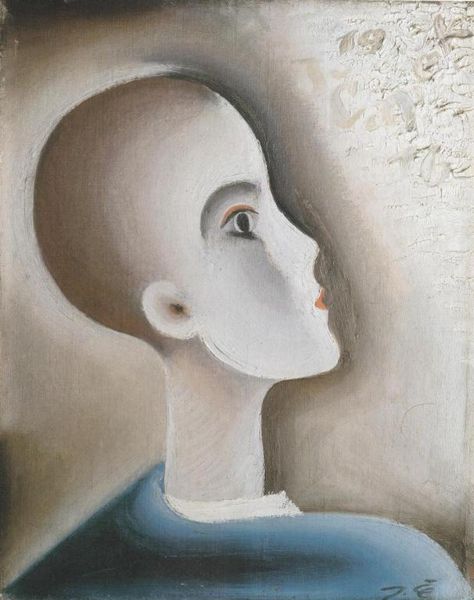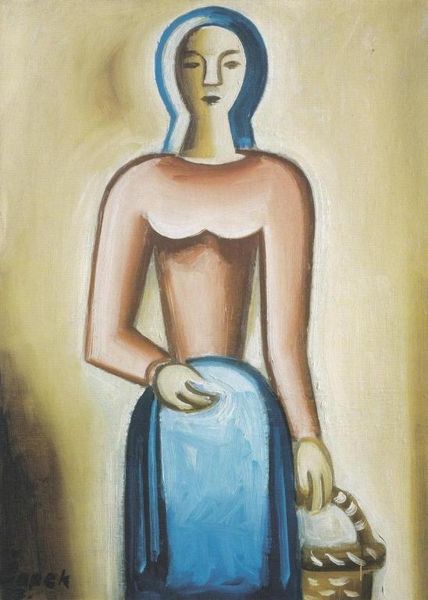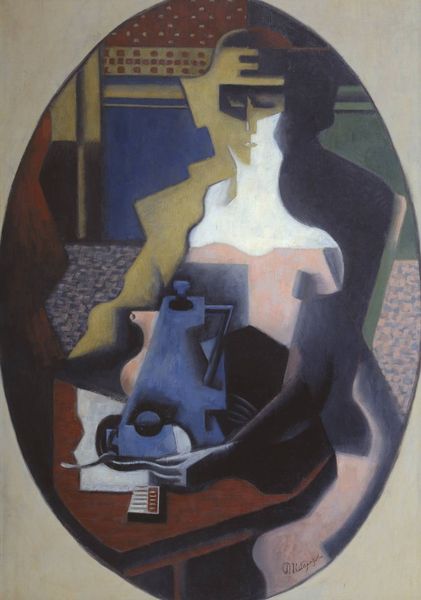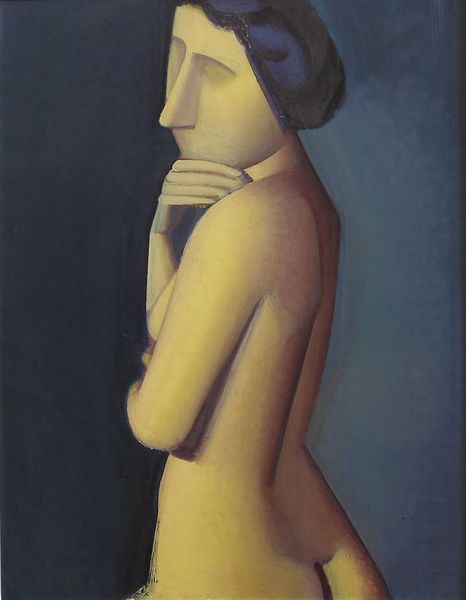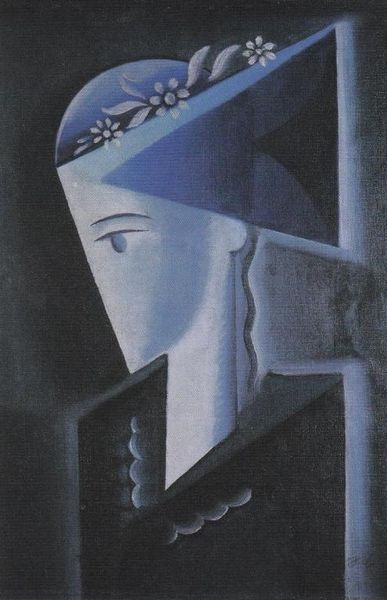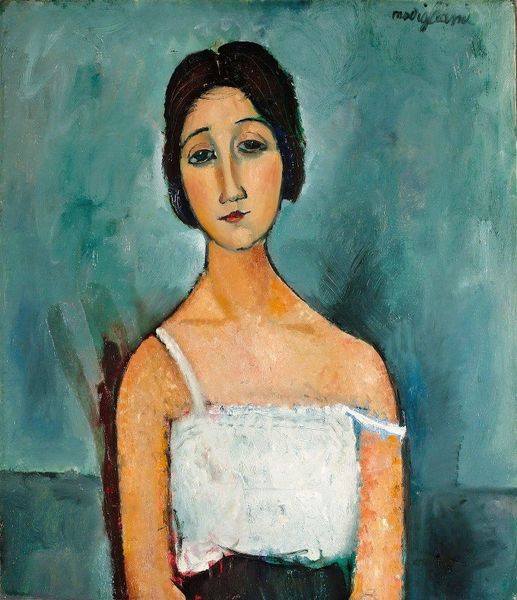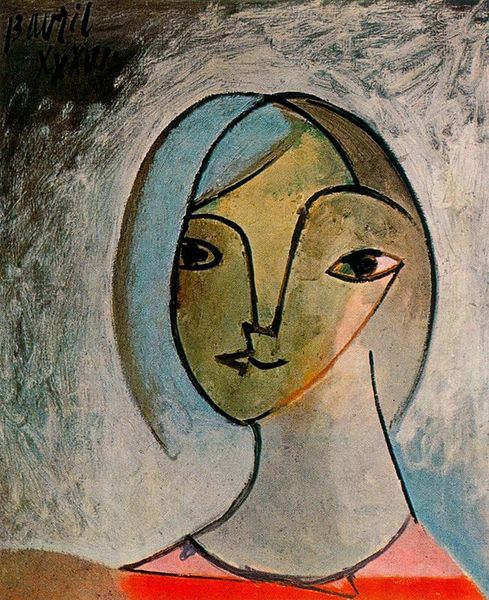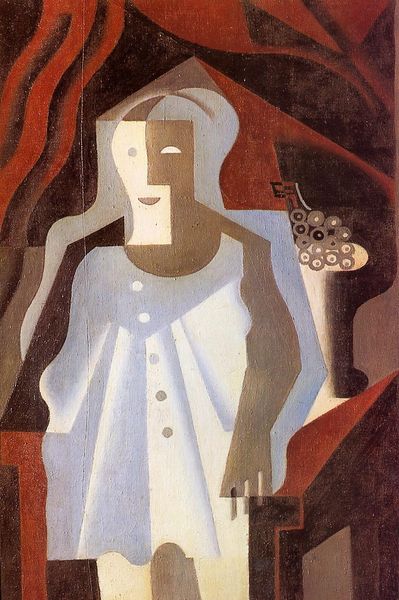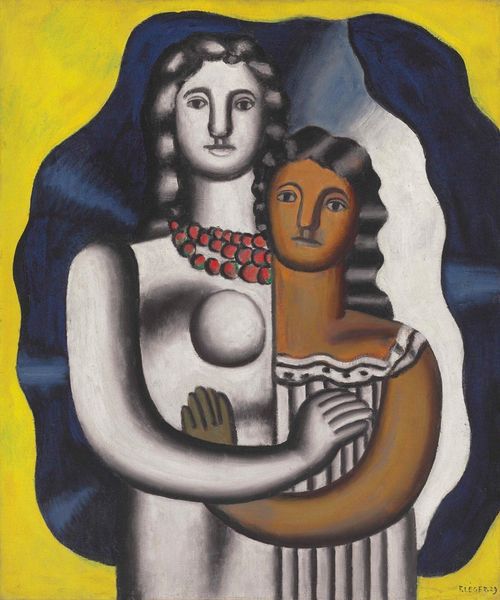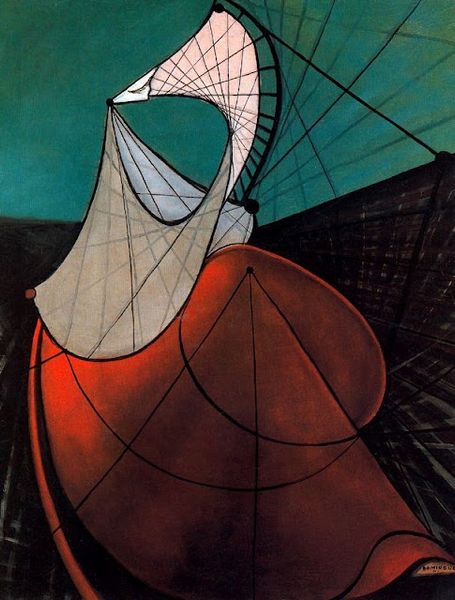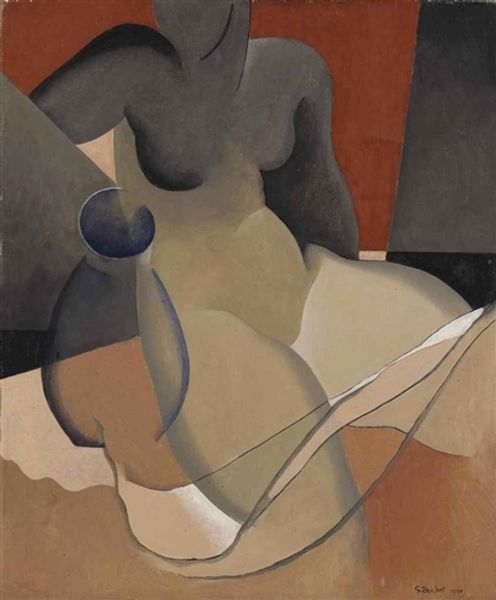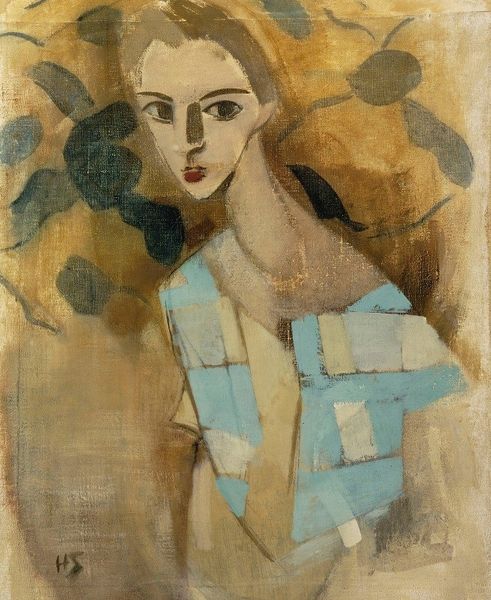
painting, oil-paint
#
portrait
#
cubism
#
painting
#
oil-paint
#
figuration
#
modernism
Copyright: Public domain
Editor: This is Josef Capek’s "Girl with Daisy," painted in 1914 using oil paint. It's strikingly geometrical, almost severe in its simplification of the human form. I am drawn to how angular it is. How do you interpret the artist's choice of geometric forms to portray the subject? Curator: Capek's deployment of geometric forms represents more than just simplification; it is a formal exploration of visual language characteristic of Cubism. The shapes dictate our viewing, creating a fragmentation, a sense of simultaneous perspectives presented on a single plane. The choice speaks to a deconstruction of traditional representation. Editor: So, the flatness and shapes are deliberate and significant to the art movement? Curator: Precisely. Consider the tonal arrangement – the limited palette contributes to the structural integrity of the composition. It's through such restrictions, in tone and form, that we can most clearly discern Capek’s pursuit of essential artistic vocabulary, independent of naturalistic representation. Are you noting how light emphasizes form? Editor: Yes, I see how the shading enhances the angular quality of her body. But how do the daises come into play here? Curator: They present an interesting counterpoint. Nestled within these rigid structures, their organic, albeit simplified, forms introduce an element of natural softness, thereby activating a tension, almost a challenge to the Cubist paradigm. Do you read that tension too? Editor: I do now! It's like he's playing with the ideas of what is art, nature, and humanity all at once. I appreciate learning to consider this from a purely structural standpoint. Curator: Indeed, by understanding this pictorial architecture, you gain a stronger appreciation for how the image functions as a statement, not just as a depiction.
Comments
No comments
Be the first to comment and join the conversation on the ultimate creative platform.
